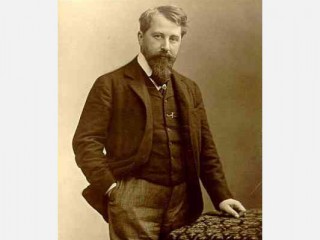
Arthur Schnitzler biography
Date of birth : 1862-05-15
Date of death : 1931-10-21
Birthplace : Leopoldstadt, Vienna
Nationality : Austrian
Category : Famous Figures
Last modified : 2010-12-22
Credited as : Dramatist and novelist, ,
The Austrian dramatist and novelist Arthur Schnitzler is at his best in one-act plays and novellas that often deal with extreme situations—death, sexual conflicts, and neurotic and even psychotic states.
Born of Jewish parents in Vienna, where he spent almost his entire life as a physician, Arthur Schnitzler looked upon himself primarily as a scientist and never gave up his medical practice. His first creative period (1893-1900) saw the publication of numerous poems and sketches, largely centered on themes of infidelity and jealousy, and two major works, his first novella, Sterben (1894; Dying), and his first successful play, Anatol (1893).
In the mid-1890s Schnitzler was associated for a short time with a literary movement of impressionist writers, including Hugo von Hofmannsthal, who were violently opposed to the naturalism then in vogue in Berlin. But soon he broke away from cafe society—the Jung-Wien group, which gathered in Vienna's famous Cafe Griensteidl—and he never again joined any literary circle.
The highlight of Schnitzler's second phase (1900-1912) was his famous play Reigen (1900; La Ronde), which Eric Bentley has called "a great 'comedy' of sexual promiscuity." Banned, attacked, censored on its first appearance, and later withdrawn by Schnitzler himself, it has gradually won the reputation of a masterpiece of modern drama. La Ronde, in 10 brief dialogues between a man and a woman, reveals the attitudes of partners from all social classes before and after the act of love. Modern critics no longer see this play as pornographic but rather as a bitter, witty, and yet tender and melancholy examination of the human condition expressed through the metaphor of man's endless "round dance" of sexuality and desire.
As a writer of fiction, Schnitzler developed early in his career the technique known as stream of consciousness and later made famous by James Joyce. The best examples are two of his stories, Leutnant Gustl (1900; None but the Brave) and Fräulein Else (1925). The former is a long interior monologue describing an unpleasant young lieutenant who, insulted by a baker, broods until he reaches the decision to commit suicide in order to preserve his honor, only to be saved accidentally by the knowledge that the baker has died of a heart attack. In Fräulein Else Schnitzler used the stream-of-consciousness technique to reveal a psychotic young girl's motives for disrobing in a hotel lobby.
Schnitzler's third and last period, from 1912 to the time of his death, has often been referred to as "retrospective." To this phase belong such masterpieces as Frau Beate und ihr Sohn (1913; Beatrice) and Casanovas Heimfahrt (1918; Casanova's Homecoming) and the novella Traumgekrunt (1925; Rhapsody). In two important works, his long autobiographical novel, Der Weg ins Freie (1908; The Road to the Open), and the play Professor Bernhardi (1913), Schnitzler deals with racial and religious prejudice, specifically with anti-Semitism, which he sees as a problem of general human concern. He chooses many of his characters from the medical profession and assigns to them the role of the raisonneur who expresses his own tolerant views on life and love.
Schnitzler's My Youth in Vienna, translated by Catherine Hutter (1970), is his diary of his early years, through the 1870s. The most complete study of him in English is Solomon Liptzin, Arthur Schnitzler (1932). A good sampling of critical investigations is the eight papers delivered at the University of Kentucky in 1962: Studies in Arthur Schnitzler: Centennial Commemorative Volume, edited by Herbert W. Reichert and Herman Salinger (1963). The most comprehensive and reliable guide to the literature by and about Schnitzler is Richard H. Allen, An Annotated Arthur Schnitzler Bibliography 1879-1965 (1966).
Psychoanalysis and old Vienna: Freud, Reik, Schnitzler, Kraus, New York: Human Sciences Press, 1978.
















